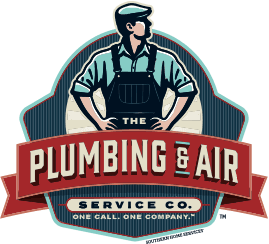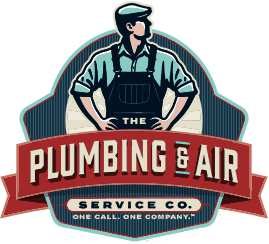During the colder months, frozen pipes become a higher risk in your home. Because frozen pipes can burst, it’s important to do what you can to avoid costly plumbing repairs, water damage, and even HVAC damage. Follow these tips and tricks for how to prevent pipes from freezing.
Why is it Important to Prevent Pipes from Freezing?
Frozen pipes can be extremely dangerous due to the thawing process sometimes resulting in burst pipes. The reason pipes burst is not because of the sudden expansion of frozen water, but the pressure from flowing water against ice blockages. And because these blockages may thaw unevenly, letting your pipes thaw naturally can also be dangerous, and lead to burst pipe damage such as:
- Plumbing repair or replacement
- Structural water damage
- Mold or mildew growth
- HVAC system repair or replacement
Preventing pipes from freezing in the first place is the safest option for avoiding the risk altogether.
How to Prevent Water Pipes from Freezing
Before you even begin preparing your pipes for freezing weather, it’s a good idea to have them inspected. It’s possible that clogs or cracks have gone undetected and may result in dangerous leaks or bursting if your pipes freeze in the cold.
Short-Term Solutions
Keep these solutions top of mind during the coldest months to help increase warm airflow in your home and support your long-term solutions.
- Keep the thermostat temperature consistent. To save on heating costs, many homeowners tend to turn the thermostat down at night. But doing so can put your pipes at risk of freezing as temperatures outside drop overnight. Constantly changing your thermostat can also overwork your heating system over time. Avoid this issue by maintaining a consistent thermostat temperature throughout the colder season.
- Open doors and cabinets closing off piping. Exposed piping isn’t the look most homeowners are going for, which is why water pipes are typically hidden behind cabinets or closed closet doors. The issue with this is that warm air can’t reach your pipes as easily. When anticipating low temperatures, open your doors and cabinets to allow easier circulation of warm air to your pipes.
- Winterize outdoor water systems. This includes removing and storing any hoses and draining all faucets or water systems such as sprinklers, pools, ponds, or anything that may connect back to your main water line. Any standing water that remains or is trapped inside a hose or pipe is at higher risk of freezing and potentially backing up or bursting your main water line.
Long-Term Solutions
These solutions will require additional costs for installation or repair but will provide better home heating control and pipe protection long-term.
- Insulate your pipes. Pipe insulation is generally easy to install and can even raise water temperature 2°F-4°F hotter than uninsulated pipes. Some options like heat tape or cables can be extremely effective for pipes located in unheated areas of your home.
- Insulate unheated areas where pipes are located. Most unheated areas of your home such as your attic or crawlspace don’t typically require much attention when it comes to heating or insulation. However, if your pipes are in these spaces, it’s worth adding insulation to prevent them from freezing.
- Weatherproof around doors, windows, and cracks. Air leaks can be a major culprit for heat loss in your home. They can account for as much as 40% of the energy used to heat and cool your home. To better keep the heat inside and cold air out, test your home for leaks and install weatherproofing products wherever necessary to help protect your pipes from heat loss and cold drafts.
- Service your heating system. Ideally, your heating system should be serviced annually for filter replacement, tune-ups, and inspection. Doing so before the winter season will help your system run more efficiently and prevent unexpected breakdowns.
Related Content: What Is an Automatic Water Shut-Off Valve? Do You Need One?
Signs of Frozen or Burst Pipes
A frozen pipe isn’t always cause for alarm. If you notice any of these signs of a frozen pipe, make sure to open your faucets, turn up the heat, and call your local plumber for further guidance before continuing any methods of thawing.
Signs of frozen pipes:
- Limited running water.
- Strange banging or gurgling sounds.
- Condensation.
- Bulging.
A burst pipe, however, requires immediate professional attention. If you notice one or more of these signs of a burst pipe, shut off your main water line and contact your nearest plumbing expert for emergency burst pipe repair services.
Signs of burst pipes:
- Changing water pressure.
- Puddles or wet spots.
- Rotten egg or sewage smells.
- Water spraying or dripping sounds.
Discover Pipe Damage? Contact Your Local Greensboro Plumbers
Cracked or damaged piping during the colder months can be much more dangerous due to the risk of burst pipes. If you discover pipe damage in your home, trust your local plumbing experts at Plumbing & Air Service Co. for emergency service. We have plumbers in the Winston-Salem, NC area ready to assist you. Call 336-502-8540[OUW7] , or request service online for your additional plumbing needs.



